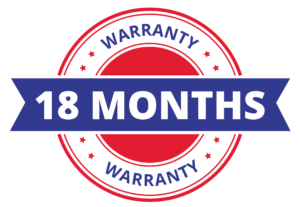A high monthly car payment can put strain on your budget, but refinancing isn’t always the best or easiest solution. Whether you financed your vehicle through a Buy Here Pay Here (BHPH) dealership or a traditional lender, there are ways to reduce your car payment without refinancing.
This guide covers smart strategies to lower your monthly car payment, save money, and keep your car ownership stress-free.
Why Lowering Your Monthly Car Payment Matters
A lower car payment helps:
- Free up extra cash for savings, emergencies, or daily expenses.
- Reduce financial stress without extending your loan term.
- Improve your debt-to-income (DTI) ratio, which helps your overall financial health.
If refinancing isn’t an option due to bad credit, a high-interest rate, or a long loan term, these strategies can still help reduce your car payment.
1. Make Extra Payments Toward the Principal
Even if your loan requires a fixed monthly payment, most lenders allow extra payments toward the principal.
- Paying down the principal reduces your overall loan balance faster.
- A smaller loan balance results in less interest charged over time.
- You may be able to recalculate your loan payment based on the lower balance—check with your lender.
Even an extra $25-$50 per month toward your principal can reduce your total interest costs and shorten your loan term.
2. Ask Your Lender for a Payment Restructure
Some lenders offer payment restructuring options that don’t require full refinancing.
- Lowering your interest rate – Some lenders allow a rate adjustment after consistent on-time payments.
- Extending your loan term – While this may cost more in total interest, it can lower your monthly payment in the short term.
- Switching to bi-weekly payments – This can reduce interest buildup and help you pay off your loan faster.
3. Trade In Your Car for a Lower-Priced Vehicle
If your car payment is too high for your budget, consider trading it in for a more affordable vehicle.
- Many Buy Here Pay Here dealerships allow trade-ins even if you still owe on your loan.
- Choosing a lower-cost, fuel-efficient car can significantly reduce your payment and insurance costs.
- Look for trade-in promotions that help cover the remaining balance on your current car.
4. Improve Your Credit Score for Better Terms
If your credit score has improved since you first got your loan, you may be eligible for better financing terms without full refinancing.
- Make on-time payments to build a stronger payment history.
- Pay off credit card balances to reduce your debt-to-income ratio.
- Check your credit report for errors that could be lowering your score.
A higher credit score may qualify you for better payment options or a lower interest rate from your lender.
5. Negotiate a Lower Insurance Rate
Your monthly car expenses include more than just your loan—auto insurance costs also impact your budget.
- Compare rates from different providers and switch to a more affordable policy.
- Increase your deductible to lower your monthly premium.
- Ask about discounts for safe driving, bundling policies, or taking a defensive driving course.
Reducing your insurance payment can free up extra money to help manage your car loan.
6. Make a Lump Sum Payment If You Can
If you receive a tax refund, work bonus, or extra savings, consider making a one-time lump sum payment toward your car loan.
- A large payment directly toward the principal can lower your remaining balance.
- Some lenders allow you to recalculate your monthly payment based on the reduced loan amount.
Even a small lump sum payment of $500-$1,000 can make a noticeable impact on lowering your monthly car expenses.
7. Look for Hardship or Payment Deferment Options
If you’re struggling to make payments due to job loss, medical bills, or financial hardship, check if your lender offers temporary deferment or hardship options.
- Some lenders allow you to pause payments for 1-3 months to help you recover financially.
- Others may offer temporary lower payments until your financial situation improves.
It’s always better to communicate with your lender before missing a payment to avoid late fees or repossession risks.
8. Consider Selling the Car and Buying a Cheaper One
If your car payment is unmanageable, selling your vehicle and purchasing a more affordable one could be a smart move.
- If your car is worth more than what you owe, you can use the equity toward a cheaper car.
- Consider Buy Here Pay Here dealerships, which offer low-down-payment financing for budget-friendly vehicles.
Final Thoughts: Manage Your Car Payments Wisely
Even if refinancing isn’t an option, you can lower your car payment through strategic planning. Whether it’s making extra payments, negotiating better terms, or trading for a lower-cost vehicle, these steps can help you manage your car loan responsibly.
If you’re looking for affordable financing and reliable used cars, check out our Buy Here Pay Here dealership options today!









